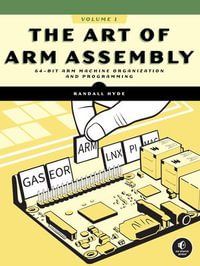
Discrete Cosine and Sine Transforms
General Properties, Fast Algorithms and Integer Approximations
eText | 28 July 2010
At a Glance
eText
$225.50
or
Instant online reading in your Booktopia eTextbook Library *
Read online on
Desktop
Tablet
Mobile
Not downloadable to your eReader or an app
Why choose an eTextbook?
Instant Access *
Purchase and read your book immediately
Read Aloud
Listen and follow along as Bookshelf reads to you
Study Tools
Built-in study tools like highlights and more
* eTextbooks are not downloadable to your eReader or an app and can be accessed via web browsers only. You must be connected to the internet and have no technical issues with your device or browser that could prevent the eTextbook from operating.
ISBN: 9780080464640
ISBN-10: 0080464645
Published: 28th July 2010
Format: ePUB
Language: English
Number of Pages: 368
Publisher: Elsevier S & T
You Can Find This eBook In
This product is categorised by
- Non-FictionEconomicsEconometrics
- Non-FictionComputing & I.T.Computer Science
- Non-FictionMathematicsAlgebra
- Non-FictionMathematicsCalculus & Mathematical Analysis
- Non-FictionEngineering & TechnologyElectronics & Communications EngineeringElectronics EngineeringAutomatic Control Engineering
- Non-FictionEngineering & TechnologyTechnology in GeneralEngineering in General
- Non-FictionEngineering & TechnologyMechanical Engineering & MaterialsMechanical Engineering
- Non-FictionEngineering & TechnologyElectronics & Communications EngineeringCommunications Engineering & Telecommunications
- Non-FictionMathematicsApplied Mathematics
- Non-FictionBusiness & ManagementBusiness Mathematics & Systems
- Non-FictionEngineering & TechnologyElectronics & Communications EngineeringElectronics Engineering























